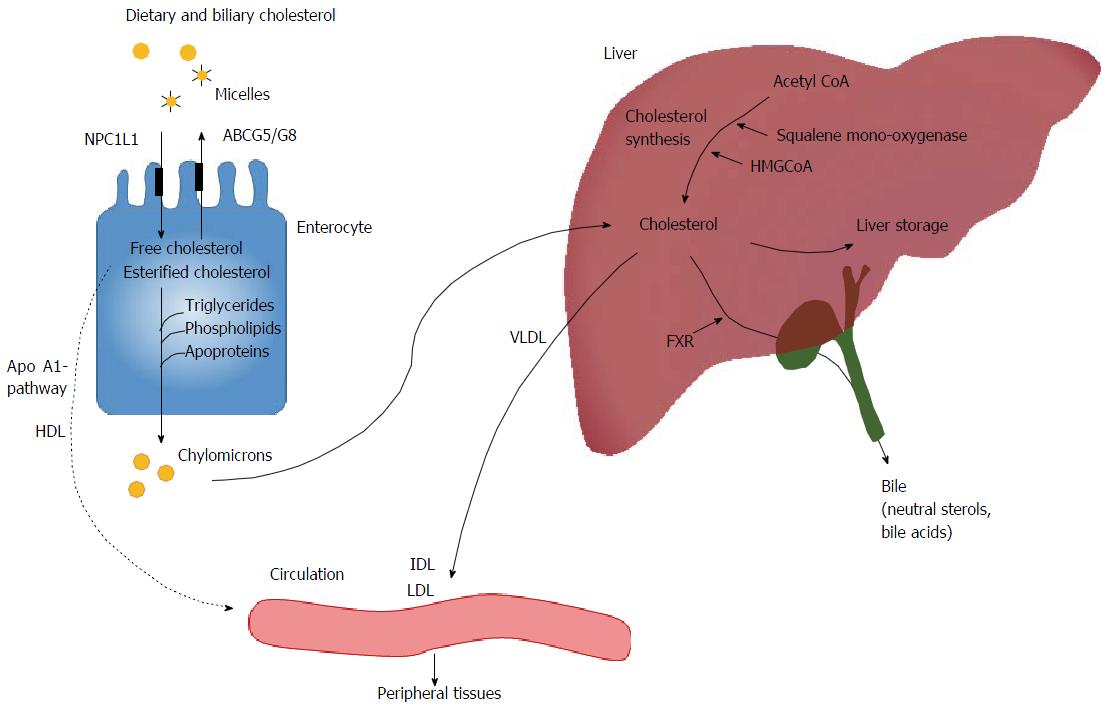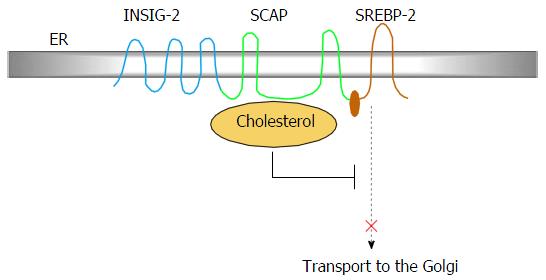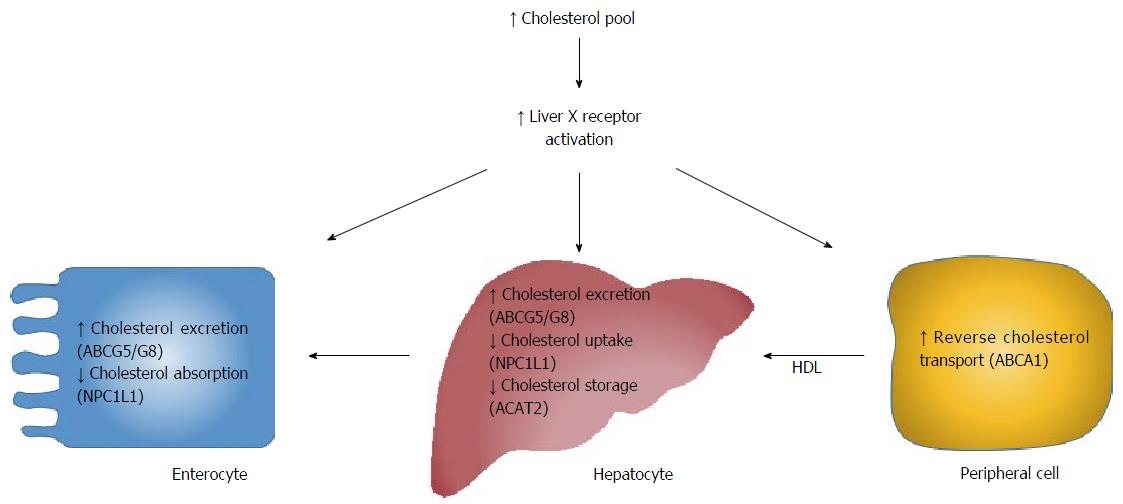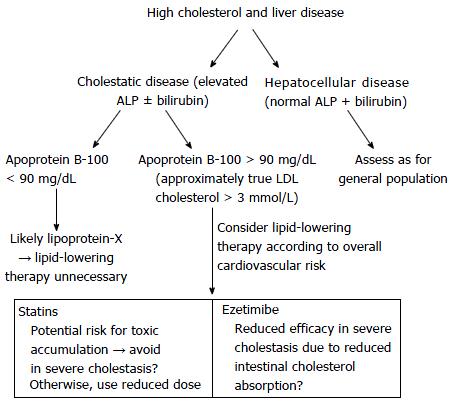Copyright
©The Author(s) 2016.
World J Hepatol. Aug 8, 2016; 8(22): 924-932
Published online Aug 8, 2016. doi: 10.4254/wjh.v8.i22.924
Published online Aug 8, 2016. doi: 10.4254/wjh.v8.i22.924
Figure 1 From the gut to the circulation: An overview of the pathways involved in cholesterol absorption and synthesis.
IDL: Intermediate density lipoprotein; HDL: High density lipoprotein; LDL: Low density lipoprotein; VLDL: Very low density lipoprotein; NPC1L1: Niemann-Pick C1 like 1; ABCG5: Adenosine triphosphate-binding cassette transporter G5 heterodimer; HMGCoA: 3-hydroxy-3-methyl-glutaryl CoA; FXR: Farnesoid X receptor.
Figure 2 One key event in cholesterol homeostasis is the gated movement of sterol regulatory element-binding protein isoform 2 from the endoplasmic reticulum to the Golgi complex, involving the cleavage-activating protein, and INSIG-2.
SREBP-2: Sterol regulatory element-binding protein isoform 2; ER: Endoplasmic reticulum; SCAP: Cleavage-activating protein.
Figure 3 Cholesterol elimination- mechanisms and key transporters.
Expansion of the cholesterol pool activates liver X receptor, thereby generating transcriptional responses resulting in cholesterol excretion and catabolism. NPC1L1: Niemann-Pick C1 like 1; ABCA1: ATP-binding cassette transporter sub-family member A 1, also known as the cholesterol efflux regulatory protein; ACAT2: Acetyl-CoA acyltransferase 2; ABCG5: Adenosine triphosphate-binding cassette transporter G5 heterodimer; HDL: High density lipoprotein.
Figure 4 Algorithm for assessing hyperlipidemia in the setting of chronic liver disease.
LDL: Low density lipoprotein; ALP: Alkaline phosphatase.
- Citation: Nemes K, Åberg F, Gylling H, Isoniemi H. Cholesterol metabolism in cholestatic liver disease and liver transplantation: From molecular mechanisms to clinical implications. World J Hepatol 2016; 8(22): 924-932
- URL: https://www.wjgnet.com/1948-5182/full/v8/i22/924.htm
- DOI: https://dx.doi.org/10.4254/wjh.v8.i22.924












